On June 22, President Trump is scheduled to meet with representatives of the nation’s technology leadership. Among the topics on the agenda, reportedly, is the future of the internet.
One of the challenges public policy makers have when considering such forward-looking questions is the natural tendency to define tomorrow in terms of what we know today. This is particularly dangerous when considering the internet, which has seen a phase shift every 12 to 15 years.
Presently, we are on the cusp of another internet reinvention called Web 3.0, and its opening act, the internet of things. Whether the promise of Web 3.0 is fully realized, however, will depend on the policy decisions we make today – specifically, the kinds of policy decisions that will hopefully be discussed with the president.
The promise of Web 3.0 is finished without open networks to connect it. Precisely, the kind of openness the Trump FCC is trying to remove by undoing the existing Open Internet Rules.
It was the World Wide Web, you’ll recall, that made the internet usable for those of us who were not part of the computer priesthood. In the late 1980s, Tim Berners Lee (now Sir Tim) created a find-and-display protocol that organized the internet’s morass of incompatible databases and made them easily usable. Call it Web 1.0; it gave us browsers and search engines and opened up the world’s knowledge to each of us.
Slightly over a dozen years later, Web 2.0 democratized the web with user-generated content. Services such as Facebook, YouTube, and the tweets of a president were the result. Now Web 3.0 promises to harness low-cost, wirelessly-connected microchips to create an entirely new generation of connected capability to drive new products, new productivity, jobs, and economic growth.
Web 3.0 is a different architecture than the web we’ve become used to. Today, the web is a platform for requesting and displaying existing information. In contrast, Web 3.0 is the orchestration of raw intelligence to produce something new.
Embedded and connected microchips in everything from cars to coffeepots flood the network with a tsunami of intelligence that Web 3.0 channels to create new products and services. That change can be seen in the difference between today’s connected car and the fast-arriving reality of tomorrow’s autonomous vehicle. The connected car is early web; the in and out delivery of preexisting information such as map directions and music. Web 3.0, on the other hand, is the orchestration of the data created by billions of microchips communicating in real time to create a new product, the driverless vehicle.
In the short term, the internet of things is Web 3.0’s opening act – and what an act it will be. McKinsey estimates the transformation in business practices and models Web 3.0 technologies enable will have an impact on the global economy to the tune of $11 trillion per year in 2025. With it, we are seeing the creation of smart cities, the development of new, responsive personal services and the promise of increased commercial productivity.
But these benefits require being free of interference from those who run the networks that take us to and from the internet. The essential key to the harnessing of billions of interconnected microchips is the network connectivity of those chips. If network operators decide that in their own interest some chips are favored over others; or some services have to pay more than other similar services; or that there should be fast lanes and slow lanes depending on preference payments, the economic growth promise of Web 3.0 will be undermined. Because these and other abuses are prohibited under the existing Open Internet Rules, the repeal or evisceration of those rules could mean the repeal or evisceration of the promise Web 3.0 offers our economy, consumers, and, job creation.
Thus far, the debate surrounding the Trump FCC’s undoing of the Open Internet Rules has been an echo of the arguments of 2014 and 2015 prior to the adoption of those rules. In fact, the entire open internet debate is rooted in arguments that have been frozen in time.
Around the time of Web 1.0, as new web services began to grow and prosper financially, networks’ efforts to extort a piece of the action reinforced the importance of network openness. Referring to his network by the colloquial “pipes,” the CEO of SBC (soon to be AT&T) Ed Whitacre exclaimed, “[F]or a Google or a Yahoo…to expect to use those pipes for free is nuts.” Ignoring that subscribers were already paying his company to access the internet, Whitacre announced, “[T]here’s going to have to be some mechanism for these people who use these pipes to pay for the portion they’re using.”
In the intervening years, the internet has exploded, yet there has never been a better description of the issue at the heart of the open internet debate: whether the companies that sell internet access to consumers should also be able to exploit their often-uncompetitive position to impose terms, conditions and fees on the activities that connect to the internet.
To date, President Trump has entirely misconstrued the open internet issue. When the rules were adopted, he tweeted
Obama’s attack on the internet is another top down power grab. Net neutrality is the Fairness Doctrine. Will target conservative media.
— Donald J. Trump (@realDonaldTrump) November 12, 2014
Of course, the opposite is true: an open internet means access to any content – including conservative media – can’t be constrained.
More importantly, however, the president’s tweet is backward-looking. Media was (and remains) an important part of the original web, but the future and Web 3.0 are way beyond that. The call and response mechanism for Netflix to deliver a movie over broadband internet is a far cry from channeling the flood of intelligence created by billions of connected microprocessors. Hopefully, the nation’s tech leaders will help the president see that future and the importance of keeping the internet fast, fair, and open.
Google and AT&T are donors to the Brookings Institution. The findings, interpretations, and conclusions posted in this piece are solely those of the author and not influenced by any donation.
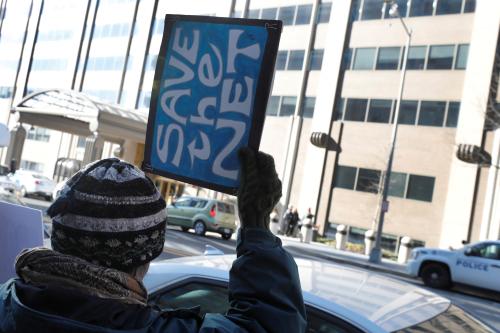
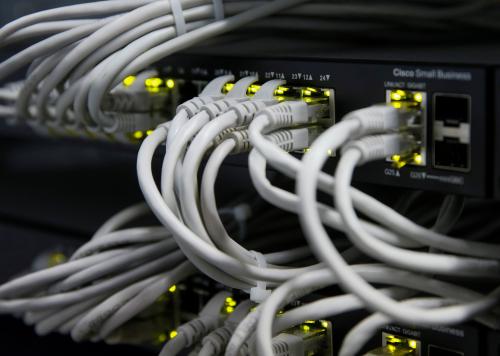
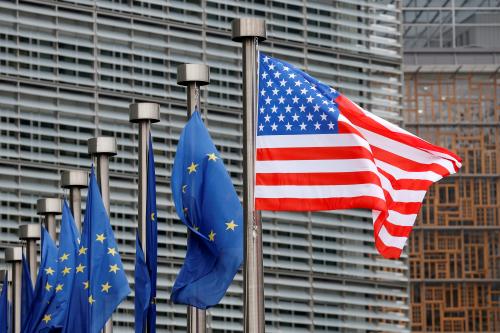


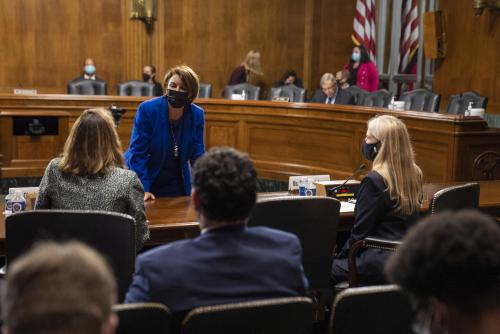
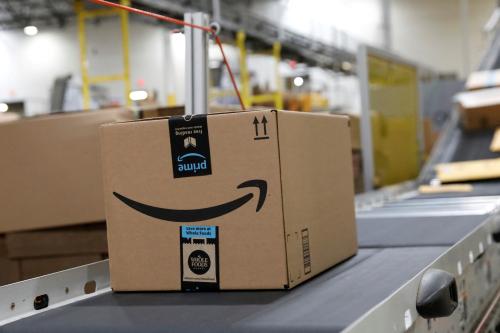
Commentary
Keeping the internet open for the future
June 20, 2017